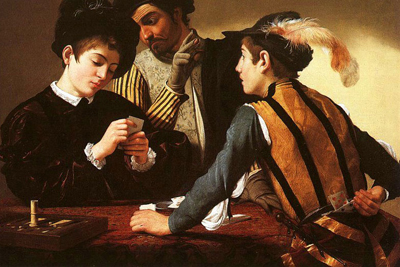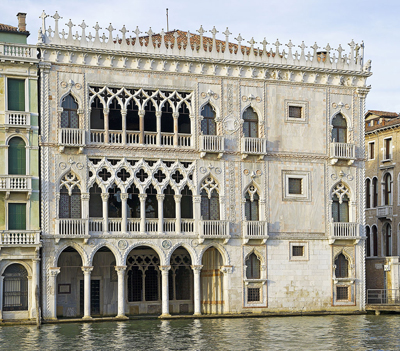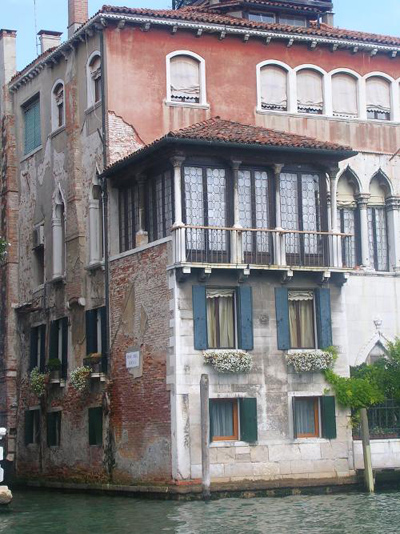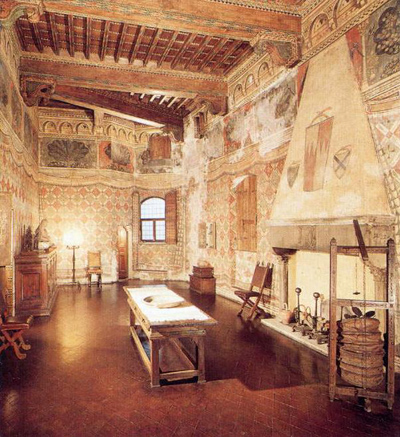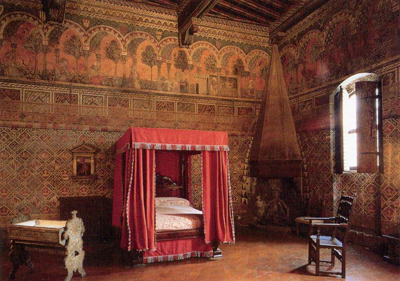So Masks, the Mircea Basarab novel, is done. It’s actually been done for a while now, but there’s been a bit of a kerfluffle. Apparently, giving away a novel is not as easy a thing as giving away a short story, and involves contracts and discussions and a lot of related drama that I didn’t expect. But I hope to have it all worked out shortly.
In the meantime, I have been cleaning out the notes/photos/websites that I used for inspiration and fact checking during the writing process (because, seriously, my desktop does not need anymore clutter). And I realized that I actually learned a lot writing this book. And much of it were things they never taught me in history class, which tended to focus more on wars and politics and less on what people ate for dinner. So I thought I’d do some posts to possibly amuse/interest you guys while we wait. Let’s start with a few places, to give you a feel for the setting for the novel.

Venice as seen from the air. Look like a fish, doesn’t it? That long, skinny island below the main body of the fish is Guidecca. It’s mainly industrial today, but in the 15th century, the wealthy had garden houses there. The island above the fish is Murano, where the glassmaking industry was (and still is) centered.
Venice was the Vegas of its day. If you were bored in the fifteenth century, if you were looking for a good time, if you wanted to get crazy, you didn’t go to Paris. You didn’t go to London. You packed a bag, told your friends that you felt the need for some spiritual consolation, and you headed off for Venice. Specifically, you headed off for carnival, a six week spree of fun and debauchery disguised as a religious celebration. Although if you missed it, there was no need to worry, because fully half the year was taken up with religious tourism in the form of one saint’s day or another. There was always a party in Venice, where, as the saying went, ‘A Carnevale Ogni Scherzo Vale’ or ‘anything goes at carnival’.
Venice’s party reputation came partly from its wealth. Marco Polo wrote that “All the gold in the world flows through the hands of the Venetians” and he wasn’t exaggerating by much. For centuries, specifically the twelfth through the fifteenth centuries, Venice held a virtual monopoly on the sugar, salt and spices coming into Europe, and had a vast network of trading partners spread from Russia to Turkey, and from Cairo to Greece. Huge fortunes were made, merchants lived like nobles, nobles lived like kings, and the tourists came to buy, came to pray or came just to gawk at it all.
One of Venice’s biggest trading partners was Wallachia (where they bought much of the grain they then resold to Constantinople), so a young Mircea would certainly have heard of the city growing up.
With thousands of tourists flooding into the city every year, naturally an industry catering to these people grew up. Would it surprise you to know that casino is a Venetian word? It should be; they invented the concept in 1638. That’s why today one of the largest casinos on the Vegas Strip is called The Venetian. It’s a homage to the place that started it all.
But Venetians liked to gamble long before the casinos came into being. In fact, that’s why they were created in the first place. Gambling was so rife in Venice–in market stalls, in taverns, in private homes, in portable tables that could be set up in a moment anywhere and taken down as quickly–that it was virtually impossible to regulate or tax. So the government got involved by requiring the people running the games to congregate in one area, and Il Ridotto, the first casino, was born.
Mircea would not have been hanging around casinos in the fifteenth century, since they hadn’t been invented yet. But he would certainly have had plenty of options for gambling nonetheless. And of course, the vampires of Venice, who wouldn’t be up during the day when the market gambling stalls were open, might have come up with the idea for a casino even earlier than the humans.
So, fortunes were made, in one way or another, in Venice. And people with money tend to like to show it off. The palazzo owned by a certain senator plays a big part in the book, so I thought you might want to see a similar palazzo from that era. Most of the grand mansions of the fifteenth century haven’t survived, but fortunately, the Ca’ d’Oro bucked the trend. Ca’ is short for casa, meaning house, and d’Oro is “of gold.” It received its name because all that filigree decoration you see on the front used to be picked out in gold. Yes, real gold. On a house. Because why the hell not?
Anyway, the Ca’ d’Oro was my inspiration for the senator’s abode, including the loggia (covered walkway) on the front and the inner courtyard.
For the other main house in the book, owned by a courtesan named Martina, I needed something opulent but a little more modest. So I took the Palazzo Falier Canossa as my model. Built a century before the Ca’ d’Oro, it has the typical Venetian set up of ground floor, piano nobile (noble floor) and then several upper stories. Because of the possibility of flooding and the smells from the canals, most home owners preferred to keep the lowest floor of the house for unloading cargo and meeting with tradesmen. They lived on the so-called noble floor or two above, and put the servants in the attic.
For interior inspiration, I had to go to Florence, where the Palazzo Davanzati is now a museum. It was built in the 14th century, but the furnishings are drawn from the 15th as well, so it works nicely as an example of an upper class house seen from the inside. This is the dining hall, with the open board ceilings common at the time, along with typical tile and wall decorations. Fun fact: the folding chairs you see might well have come from Venice. It made a ton of them in the era and exported them all over Europe.
And, finally for this post, a luxurious bedroom of the era. The bedrooms talked about in the book would have looked similar, sans the cradle, of course! With possibly some tapestries or–since Venice was a center for the arts–more paintings on the walls. But the hangings on the bed are typical, used for warmth as well as privacy, and the horribly uncomfortable chair was also fairly normal. What you don’t see, although they had them at the time, are daybeds/chaises. They tended to be flimsy in comparison with the beds people slept on, so none have survived (that I’ve been able to find) from the period. But they were a fairly common item in noble homes. And having seen their chairs, I can understand why!
More pics for those interested: http://www.arttrav.com/florence/palazzo-davanzati/
More inspiration pics coming tomorrow.

